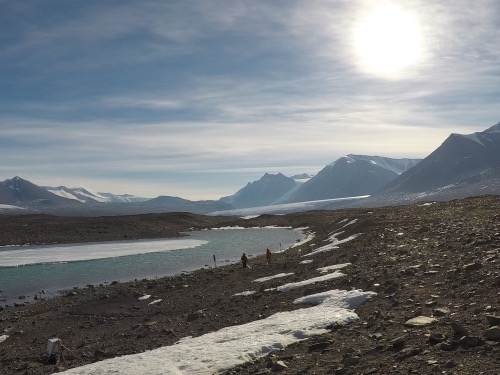Yesterday, I got the chance to meet a bunch of extraordinary scientists. I was thrilled with the result, I had the privilege to sit down briefly with Diana Wall and Ross Virginia. They had to bag drag that day so they gave me a few minutes and then introduced me to the other members of their team. But I do want to let you know why I was so excited to talk with them. These two scientists were the founders of The McMurdo Dry Valleys Long-Term Ecological Research (MCM(abbreviation) McMurdo Station LTER) Program. The Long Term Ecological Research (LTER) Network was created by the National Science Foundation (NSF) in 1980 to conduct research on ecological issues that can last decades and span huge geographical areas. Dr. Wall and Dr. Virginia brought LTER to McMurdo in 1993. The nearby McMurdo Dry Valleys on the shore of McMurdo Sound, are of interest because they form the largest relatively ice-free area on the Antarctic continent. The Dry Valleys compose about approximately 4,800 sq km, or less than 2% of the surface area of Antarctica. These ice-free areas of Antarctica are very different from most other ecosystems in the world. The Dry Valleys are not only cold but they are a desert (thus Dry Valleys). The exposed soil within the McMurdo Dry Valleys are subject to low temperatures, limited precipitation, and salt accumulation. The Dry Valleys represent a region where life approaches its environmental limits.







Comments